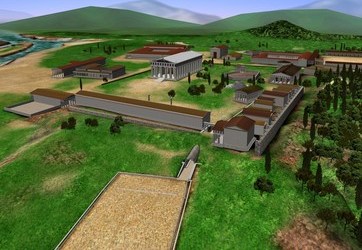The collaboration of the Department of History and Archaeology with the departments that create digital reconstructions started at a very early time. The presence of an archaeologist is considered necessary either in architectural, spatial (geographical) or virtual reality reconstructions.

A characteristic example is the work "The Workshop of Phidias in Ancient Olympia", an interactive educational game which aims at demonstrating the famous gold and ivory statue of Zeus in Olympia (430-420 BC), the work of the renowned Athenian sculptor Phidias and one of the Seven Wonders of the world. The contribution of historians to the specific work was considered necessary, mainly because no ancient copy of the statue survived, where the digital restoration could be based. It was necessary to make a synthesis from scattered information that existed in written sources, from representations of parts of the form and the decoration of the throne in various materials, as well as from the findings from the excavations in Olympia.
It was considered useful to use the fertile experience that we obtained from this collaboration in two other projects of quite different character: the digital reconstruction of the sanctuary of Ancient Olympia and the Ancient Agora of Athens, political, administrative and economic centre of possible the most important city of Ancient Greece. These two digital reconstructions attempt to represent diachronically not only the architectural environment of the areas but also of snapshots from the most representative activities that took place there.